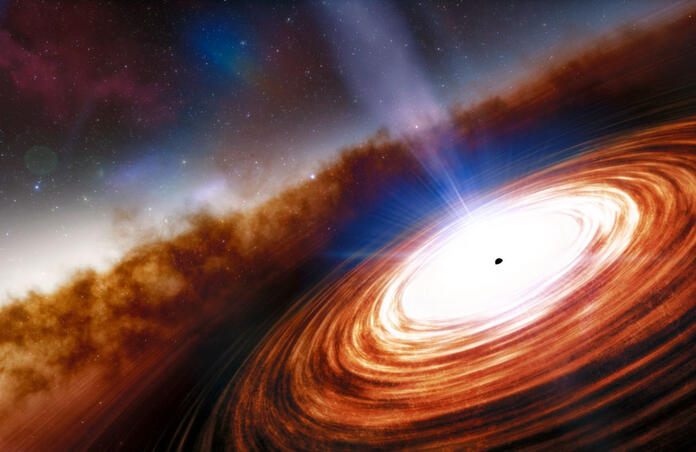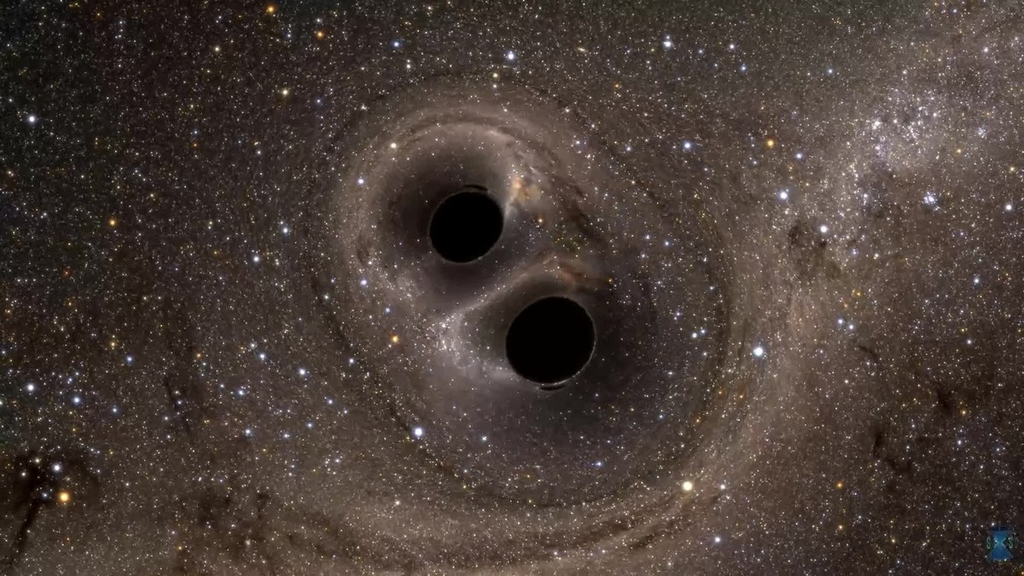Scientists find supermassive black hole moving

What might be the Arecibo telescope’s last contribution to astronomy is the discovery of a restless supermassive black hole.
The galaxy SDSS J043703.67+245606.8 (J0437 for short) is a 230 million light years distant spiral galaxy, for which in 2018 the presence of a central supermassive black hole was confirmed. The now fallen Arecibo telescope was used to determine J0437’s overall motion: the redshift in Hydrogen emission lines show that it is receding from us at about 4900 km/s. The velocity of the black hole itself gets determined with the maser method (Microwave Amplification by Stimulated Emission of Radiation), which effectively consists in studying the emission from certain molecules, in the case of J0437 it’s water right in the accretion disk of the black hole. This can be used to produce a rotation curve of that accreted material, determine the distance and hence estimate the velocity. Data from the Robert C. Byrd Green Bank Telescope, the world’s larger steerable radio telescope, suggests a velocity of 4800 km/s. It is very unusual to see an object 3 million times the mass of the Sun in displacement, they typically “sit” at the centre of the galaxy.
Yet a 50 km/s offset was confirmed with further Arecibo data as well as measurements from the Gemini telescope in the recent paper that made sensation. Combined with the fact that overall the stars and dust within the galaxy have peculiar dynamics, the movement could be explained by an earlier merging of two black holes into one (e.g. after a collision with another galaxy), or a binary black hole system – both events that could have set such an extremely massive object into motion. Astrophysicists expect there to be at least some binary black holes, but to date there are very few clear examples and for J0437, no maser observation has confirmed this hypothesis for now, although the phenomenon isn’t present for every black hole. On the other hand, gravitational waves might demonstrate that this black hole is recoiling from a merger.

This news comes as the same time as the finding of the most distant quasar, P172+18, 13 billion light years away – a quasar is a galaxy that contains a rapidly spinning supermassive black hole at its centre, emitting jets of extremely luminous radiation. They are extremely useful for cosmologists as they give indications about the Universe as it was just a few billion years old. Moreover, following on the 2019 first image of a black hole, the Event Horizon Team has published another “photograph” of galaxy M87’s black hole, this time in polarized light, which will help astrophysicists understand the effects of magnetic fields on black hole’s “eating” of matter as well as on their jets of radiation.

Quasar P172+18 M87's black hole in polarized light
It’s a very exciting time for radio astronomy and in the study of black holes. The (hopefully) soon-to-be-launched James Webb Telescope will be used in that field too: by mapping the material around a black hole in the infrared, it will allow its mass to be estimated.
Cover Image:
An artist's impression of a supermassive black hole
NOIRLab / NSF / AURA / J. da Silva
Image Credits:
1 - Binary system model, SXS
2 - P172+18, Momjian et al., NRAO/AUI/NSF/VLBA
3 - M87, EHT Collaboration
